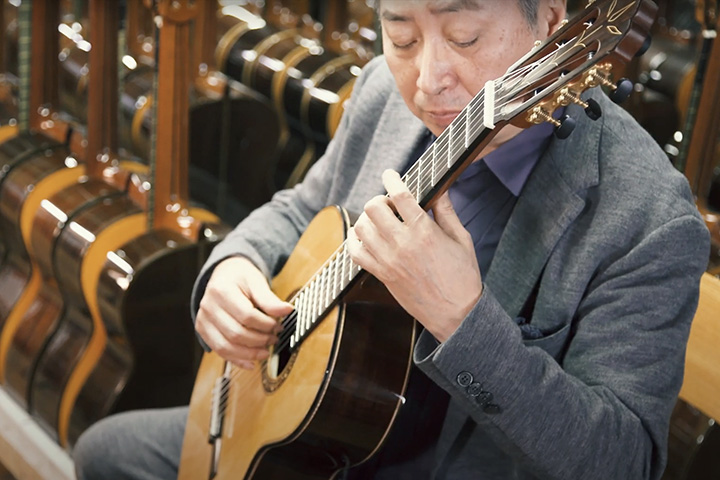
The 7 qualities needed for a good classical guitar
- Sound quality
- Sound volume
- Sound balance
- Small pitch differences
- Playability
- Solidity and durability
- Aesthetics of guitar

Sound quality
Assessing the sound quality of a classical guitar depends on individual sensitivity and there is no single answer.
Masaru Kohno, Masaki Sakurai and So Kimishima each have their own approach to the sound quality of their guitars, which depends on the quality of the woods used, the manufacturing methods and also the musical genre played.
By playing or listening to different guitars in shops or on the Internet, it is then up to each of us to find the sound that we particularly like.
Sound volume
Volume is a very important quality for extending the dynamic range of musical expression.
Recently, many international competition winners have been playing guitars with an emphasis on volume. However, double-stock or lattice guitars with very thin soundboards, which are the fashionable instruments of today, stifle the natural sound of the wood and the pleasure of the guitarist to feel the sound of his guitar evolve and improve over time according to his personal playing.
The ingenuity of Kohno Guitar Manufacturing guitars lies in improving the volume, tone and durability of the guitars through innovative designs such as the bracing.
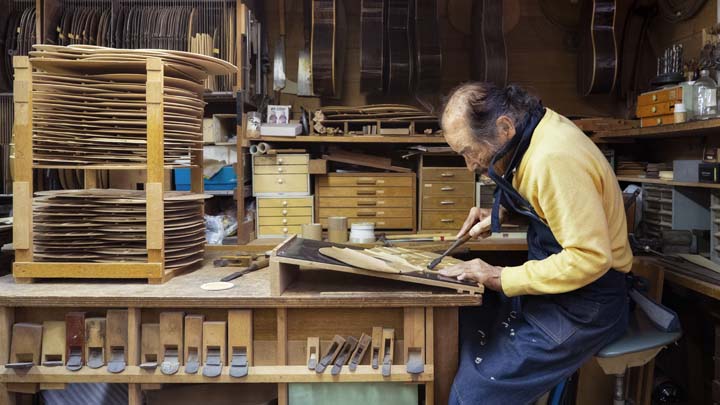
Sound volume
Masaki Sakurai is working on his bracing.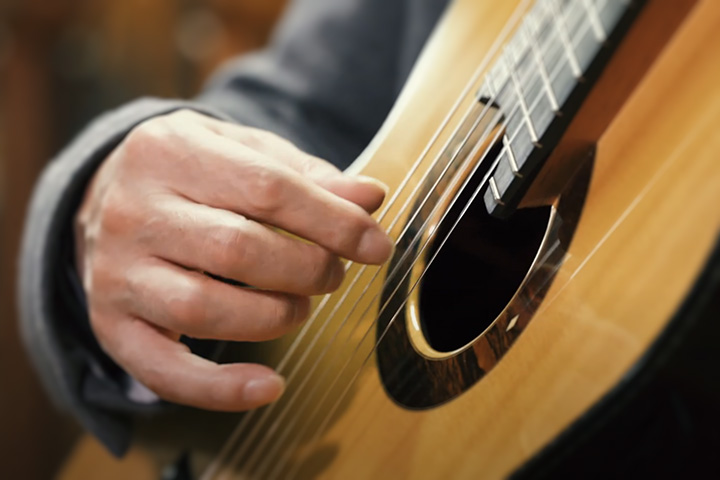
Sound balance
Shin-Ichi Fukuda plays with a Masaki Sakurai Model Maestro.Sound balance
The structure of a classical guitar is designed taking into account the difference between the heavy low strings which produce a lot of energy when played with the fingers and the lighter high strings which produce less energy.
A certain amount of ingenuity is required to get all 6 strings on all frets to sound equally good and Kohno Guitar Manufacturing places particular importance on this balance.
Small pitch differences
The guitar is a fretted instrument that requires extreme precision to fit. We carefully cut the fret grooves one by one with small original blades to achieve precise fretting. The physical properties of each string are different and vibration theory design can lead to pitch errors. However, it is possible to reproduce a more accurate pitch by tilting the position of the frets and saddle.
In recent years, we have adopted the correction theory proposed by Fumiatsu Hattori of Media Calm, a leading expert in string length correction research, to create guitars with the lowest pitch errors in the world.
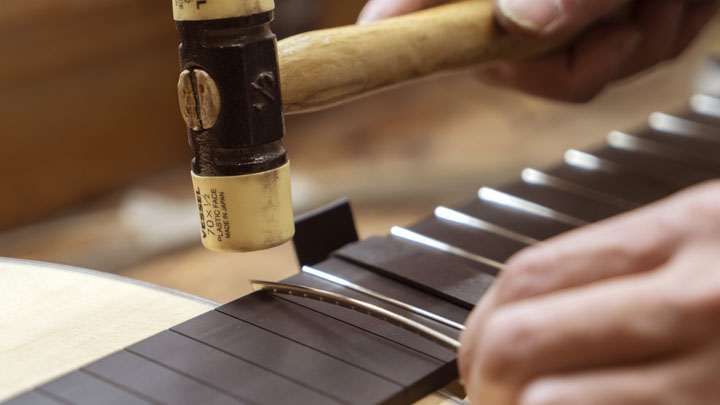
Small pitch differences
Frets by Nishino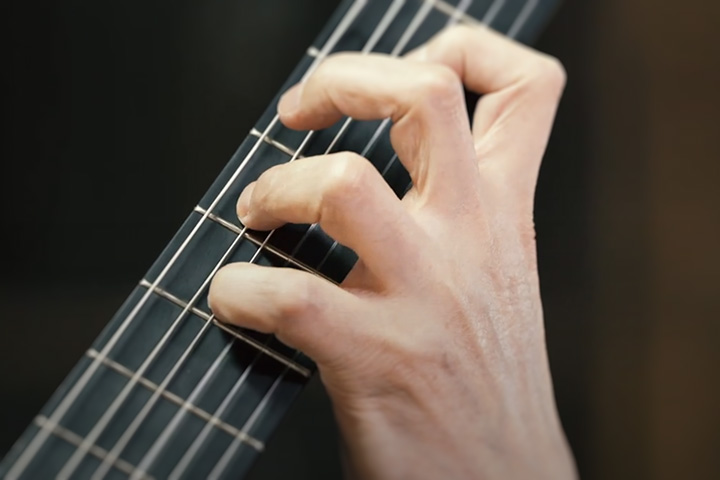
Playability
Shin-Ichi Fukuda plays with a Masaki Sakurai Model Maestro.
Playability
There are considerable individual differences in terms of playability. Hand size and arm length differ and there is no single answer.
For the neck shape and fingerboard curve, however, Kohno Guitar Manufacturing has developed a unique shape based on extensive data and guitarist experience to optimize playability.
The length and width of the strings and the thickness of the neck can also be modified and we can suggest your ideal guitar in terms of playability based on your experience and your description of the points of your current guitar that may not suit you perfectly.
Solidity and durability
Kohno Guitar Manufacturing's instruments evolve over time with the musicians and accompany them throughout their lives.
Long-term natural seasoning followed by appropriate artificial drying at key points; temperature and humidity control in the workshop and careful management of a large stock of rare, fragile and valuable materials, which only a highly experienced workshop can ensure, guarantee the quality and stability of Kohno Guitar Manufacturing guitars over time.
The excellence and durability of our guitars, regardless of the region of the world in which they are used, is well established and more and more internationally renowned guitarists are placing their trust in us.
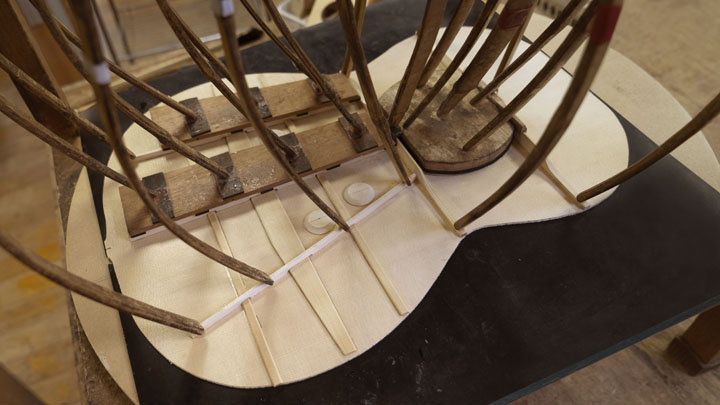
Solidity and durability
Bracing by Shimazaki.
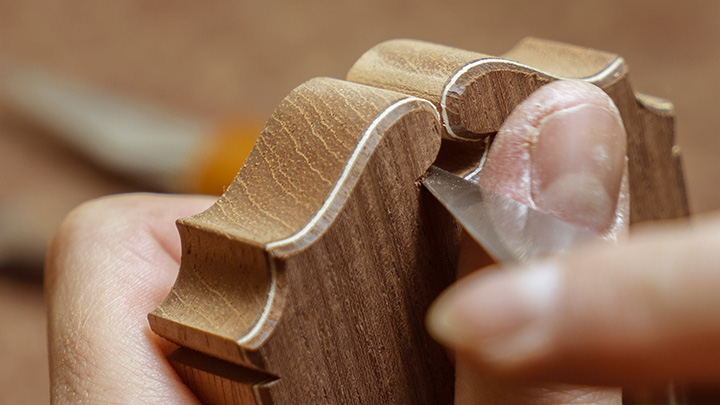
Aesthetics of guitar
Head By SaitoAesthetics of guitar
A guitar is not only a musical instrument but also a visual work of art. The aesthetics of a guitar contribute to the musician's enjoyment of playing, but also to the enjoyment of the audience at a concert.
The choice of wood species for the various parts of the guitar, the grain patterns of the wood, the proportions, the details of the headstock and rosette, the heel, the bridge, the choice of tuning machines and finishes such as purfling and varnish all play a part in the aesthetics of the guitar, the balance of which will be defined by each luthier with his or her own unique sensitivity.

